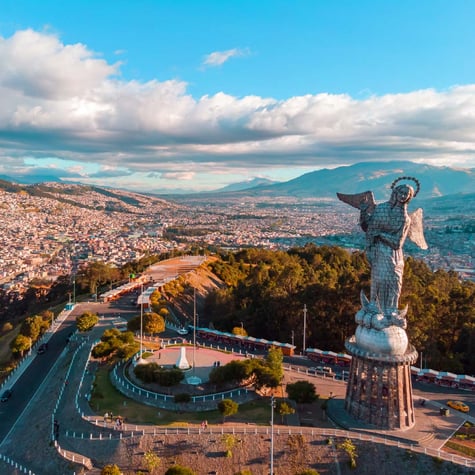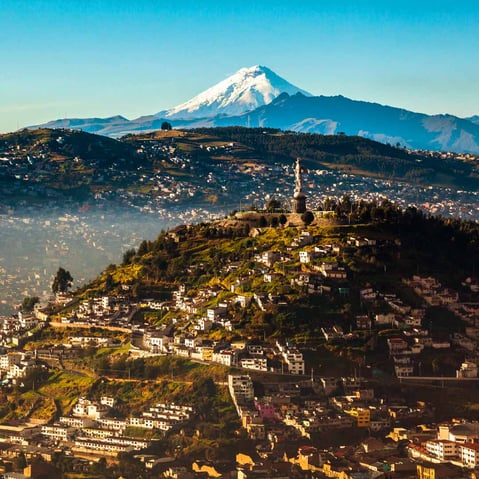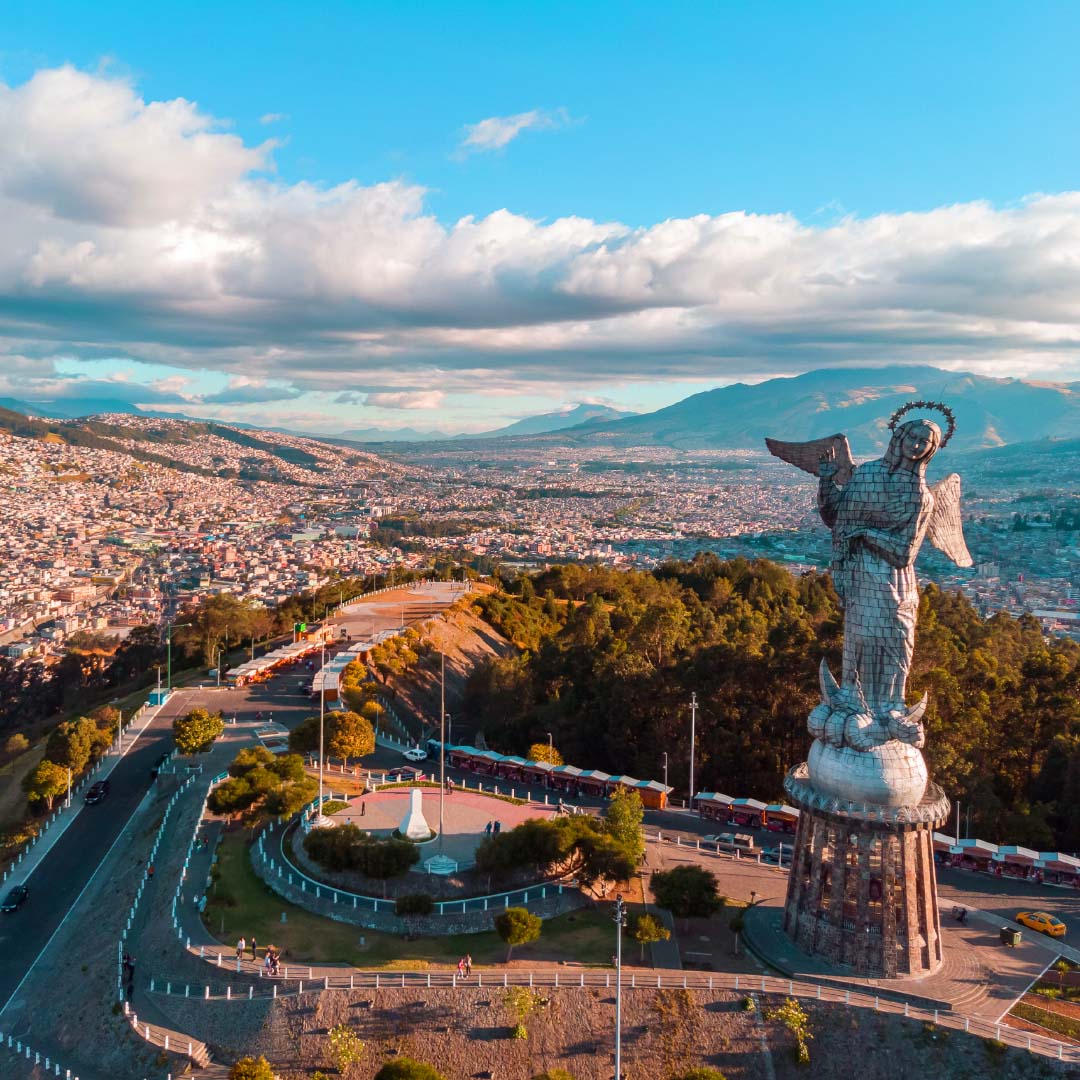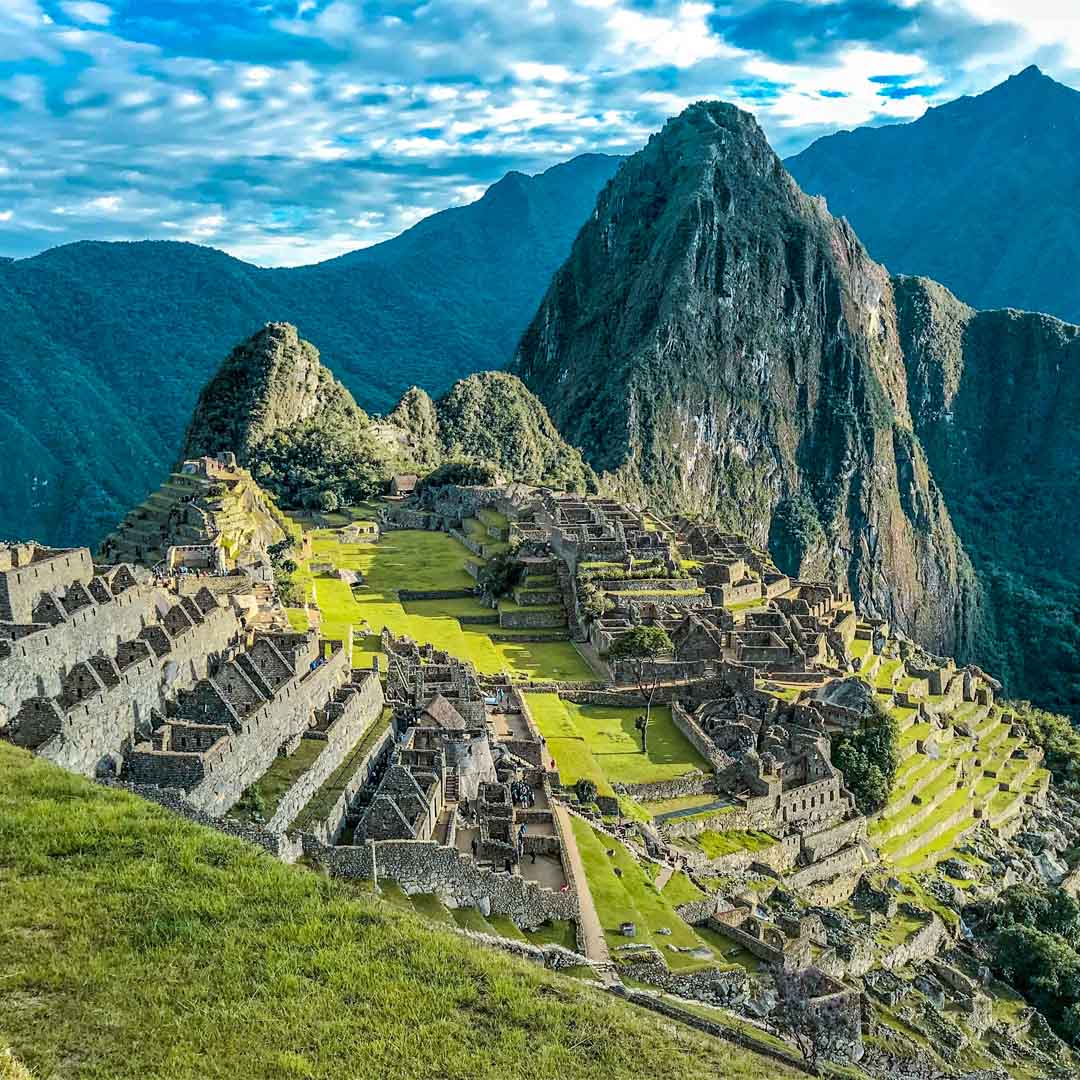Discover the hidden secrets of Quito, the enchanting capital of Ecuador, as we embark on a journey to demystify its awe-inspiring elevation.
Nestled high in the Andes Mountains, Quito stands proudly as the second-highest capital city in the world. Join us as we unravel the mysteries surrounding its lofty heights, uncovering the fascinating history, breathtaking landscapes, and unique experiences that make Quito a must-visit destination for every adventurous traveler.
Get ready to navigate the heights and delve into the captivating wonders of this extraordinary city.
What will you find here?
- Quito altitude
- How high is Quito in Ecuador?
- Quito altitude sickness
- Symptoms of altitude sickness
- How to prepare for the high elevation of Quito?
- Similar destinations at high altitude
Quito altitude
Quito, the capital city of Ecuador, is famously known as the "City in the Clouds" due to its high altitude.
Quito, the capital of Ecuador, is situated at an altitude of approximately 2,850 meters (9,350 feet) above sea level. This elevation makes it the second-highest official capital city in the world, after La Paz, Bolivia. Quito's high altitude has a significant influence on its climate, resulting in mild days and cool nights throughout the year.
Quito offers a unique experience for visitors where its altitude not only provides breathtaking views of the surrounding Andean mountains but also offers a cooler climate compared to other cities in Ecuador.
However, tourists need to acclimatize to the high altitude gradually to avoid altitude sickness.

How high is Quito in Ecuador?
Nestled in the Andean highlands, Quito, Ecuador, sits at a lofty elevation of 2,850 meters (9,350 feet) above sea level.
The city's impressive altitude not only gifts visitors with awe-inspiring panoramas of the surrounding mountainous landscape but also provides a pleasantly cooler climate, distinguishing it from other Ecuadorian cities.
While Quito's altitude is a source of its unique charm, tourists must acclimate gradually to this elevation to mitigate the risk of altitude sickness.
Beyond its role in tourism, Quito's historical significance is intertwined with its elevation, as it once stood among the highest cities globally during the colonial era. This fusion of natural beauty, historical importance, and high-altitude allure makes Quito an unparalleled destination for those seeking an extraordinary experience in the heart of the Andes.

The altitude dynamically influences everything from agriculture to architecture, with the historic center being a UNESCO World Heritage Site. The city's elevation adds a unique dimension to exploration, offering a blend of captivating history and breathtaking landscapes.
As you traverse Quito's streets, the subtle reminder of being immersed in the clouds at this significant altitude provides a backdrop to a cultural and historical tapestry that is unparalleled in the region. In essence, understanding Quito's altitude dynamics enhances the appreciation of its rich history, diverse culture, and the splendid natural wonders that unfold at the "City in the Clouds."
Quito altitude sickness
While the city's elevation contributes to its enchanting allure, visitors must be mindful of altitude sickness. To acclimate effectively, consider a gradual ascent, allowing your body to adjust to the thin air. Hydration is paramount, and limiting strenuous activities during the initial days in Quito can help mitigate altitude-related discomfort.
This proactive approach ensures that travelers can fully relish the cultural and scenic wonders awaiting them, from the historic Old Town to panoramic views of the Andean peaks.
Navigating Quito's altitude demands not just caution but also an understanding of its impact on the human body. Whether exploring the vibrant markets or wandering through the city's colonial heritage, being attuned to your physical well-being is crucial.
Consider arriving a day or two before engaging in vigorous activities, providing a buffer for acclimatization. By embracing these preparations, visitors can delve into Quito's rich history and vibrant culture without being hindered by the effects of its lofty elevation, ensuring a memorable and comfortable exploration of this high-altitude gem in the Andes.
Here are some tips to help prevent or reduce the symptoms of altitude sickness:
-
Acclimatize Gradually: If possible, spend a few days at a lower altitude before ascending to Quito. This gradual ascent helps your body adapt to the higher elevation.
-
Stay Hydrated: Drink plenty of water to stay hydrated, as dehydration can exacerbate the symptoms of altitude sickness.
-
Rest: Take it easy for the first few days to allow your body time to adjust. Avoid strenuous activities until you feel acclimatized.
-
Eat Light Meals: Eating light and easy-to-digest meals can help prevent nausea and other digestive issues associated with altitude sickness.
-
Avoid Alcohol and Smoking: Both can increase the likelihood of dehydration and worsen the symptoms of altitude sickness.
-
Consider Medication: If you're particularly prone to altitude sickness, consult a doctor about medications like acetazolamide (Diamox) which can help prevent and treat symptoms.
-
Monitor Your Health: Pay attention to how you're feeling. If your symptoms are severe or worsening, seek medical attention.

Symptoms of altitude sickness
Understanding these signs is crucial for visitors, empowering them to take necessary precautions and fully enjoy their time in Quito without succumbing to the effects of high elevation:
- Headaches
- Nausea
- Fatigue
- Dizziness
- Shortness of breath
- Difficulty sleeping
To ensure a safe and enjoyable visit to Quito, Ecuador, where the elevation is 2,850 meters (9,350 feet) above sea level, visitors must be mindful of these common symptoms.
Listening to your body, staying hydrated, and avoiding overexertion during the initial days are key strategies to manage altitude-related discomfort.
If symptoms persist or worsen, seeking prompt medical attention is advised, allowing travelers to explore Quito's cultural and historical wonders without hindrance.
How to prepare for the high elevation of Quito?
When gearing up for a visit to Quito, Ecuador, strategic preparation is key to a smooth and enjoyable experience.
- First and foremost, consider arriving a day or two before engaging in strenuous activities to allow your body time to acclimate gradually.
- Hydration is paramount; ensure you drink plenty of water to combat the effects of the thin air.
- Light, easily digestible meals can help ease the adjustment process.
- Moreover, being mindful of alcohol consumption and refraining from heavy exertion during the initial days in Quito can significantly reduce the risk of altitude-related discomfort.
These practical tips ensure that visitors can fully embrace the cultural and historical richness of Quito without being hindered by the challenges of its high elevation.

Similar destinations at high altitude
Machu Picchu Cusco, Peru
High-altitude destinations offer unique experiences, combining stunning landscapes with rich historical backgrounds. One such iconic destination is Machu Picchu in Peru, known worldwide for its breathtaking beauty and historical significance. However, several other destinations around the world share similar high-altitude charms, offering travelers an opportunity to explore ancient civilizations and remarkable terrains above the clouds.
These destinations, much like Machu Picchu, are not just about the altitude but also about the cultural and historical richness they encompass. They provide a glimpse into ancient civilizations and their remarkable achievements in architecture, astronomy, and agriculture. Visiting these places is not only a physical journey but also a voyage through time, offering insights into the lives and cultures of ancient societies.
- Location: Southeastern Peru
- Best Time to Visit: May to September (dry season)
- History: Once the capital of the Inca Empire, Cusco is a UNESCO World Heritage Site with a rich blend of Inca and Spanish colonial architecture.
- Altitude: Roughly 3,400 meters (11,200 feet).
-1.jpg?width=482&height=482&name=Best-things-to-do-in-Peru-(parte1)-1.jpg)







-1.jpg?width=482&height=482&name=Best-things-to-do-in-Peru-(parte1)-1.jpg)








